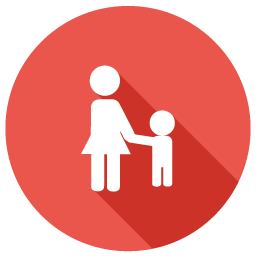Become More Persuasive with This Fundamental Human Urge
Relevant topics Archive, Conversion
Observing others’ emotional conflict and agony over an impending decision makes our preferences converge to those of the conflicted actor. We choose more similarly, based on our empathy and shared feelings for the other we observe. This has implications for both consumer behavior in a marketing environment and group decision making.

When a little decisional pain goes a long way
Decision making inevitably leads to conflict. We ponder about which products to hurl in our carts when standing in front of supermarket shelves, or which country to visit on our next holiday trip. There’s no such thing as choice without at least some sort of decisional friction.
Psychologists have discovered an interesting side effect from decisional pain: whenever we see someone else struggling with her decisions, this influences our own preferences too.
First of all, seeing another person experiencing decisional conflict, makes us feel empathy for that person. This empathy results from the psychological pain we perceive in someone else. Because we feel sorry for the psychological pain the other experiences, we feel an automatic urge to help – either directly or indirectly. We imagine ourselves standing in the other’s shoes, leading to a strong sense of understanding. Those empathic feelings translate to a greater shared identity with the other person, indirectly making our preferences more likely converge to her final choice.
Research by Schrift and Amar (2015) shows that it is not only the outcome of the decision that influences us, it’s also the process that’s going on in the others’ brain that changes our preferences. Since nobody likes to experience (psychological) pain, we automatically feel an urge to minimize such a negative feeling. And of course, the easiest medicine is to simply follow the choice the other person is making. People are therefore eager to converge their choice towards the pain-inducing choices of others, showing the power of pain and decisional conflict.
How to be more persuasive by showing decisional friction
Are you trying to persuade consumers, online or in a physical environment? The power of decisional friction helps you to converge consumers’ choice.
For instance, a product review stating “after thinking long and hard on it, I picked this specific product out of all available offerings” emphasizes the psychological pain of decisional conflict others experienced. As a result, (new) customers feel more empathically connected to the review, increasing its persuasive punch.
Next to that, decisional conflict in restaurants might actually converge preferences towards the most picked choices. Hearing someone at another table expressing his doubt about the risotto with mushrooms or the spaghetti bolognese and finally picking the risotto might influence our own preferences. Of course, waiters might tap in on that by sharing anecdotes with unsure customers about the hardships others experienced before finally picking a meal. If you have sales representatives working for you, let them expand on the doubts and decisions other consumers made in order to convert them towards your preferred purchase.
It might work in department stores as well, where consumers often see themselves confronted with several brands with more or less the same specifications. Sales staff might tell them about doubts other consumers had between two brands and explain how they finally made their choice for either one of them. It’s the decisional pain experienced by others that helps consumers feel empathy for them and converge their decisions towards the choice others made.
And finally, dramatic advertising channels such as television and radio are perfect to vividly portray decisional conflict through characters and stories.
But remember: empathy is a virtue
I want to conclude by stressing that individuals vary in the degree they are influenced by others’ decisional conflict.
The observed effect is more pronounced for individuals who generally have a greater tendency to empathize with others. Furthermore, the convergence of preferences seems to occur only if participants actually see the other being in decisional conflict or hear about it later on from someone else. It seems obvious that a more convincing story about the decisional conflict will lead to the best results.
Looking for consensus among employees or trying to influence consumer decisions? Pain and decisional conflict can help to converge (consumer) preferences and bring you the result you’re looking for. But make sure consumers observe others being in (psychological) pain or directly tell them about the doubts others had before they finally made their choice. You’ll let the gears of human empathy skyrocket your persuasiveness.
Further Reading
-
These are the 7 most interesting neuromarketing insights of 2015
I vividly remember reading a cool article last year. Scientist found that words that sound alike could trigger the same brain areas. Specifically they found that ‘bye now’ and ‘buy now’ were closely linked together. It was good to know that the hidden gems from the scientific journals still found their way to us marketers. But after that it got quiet. Where was I going to get those latest juicy insights?


